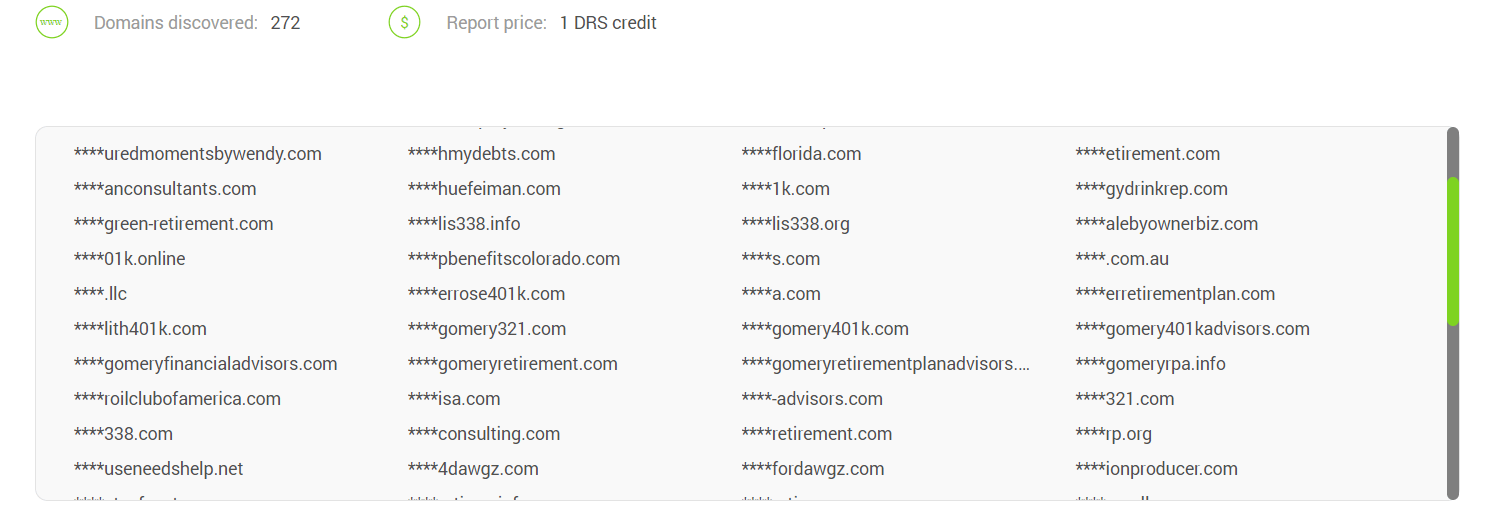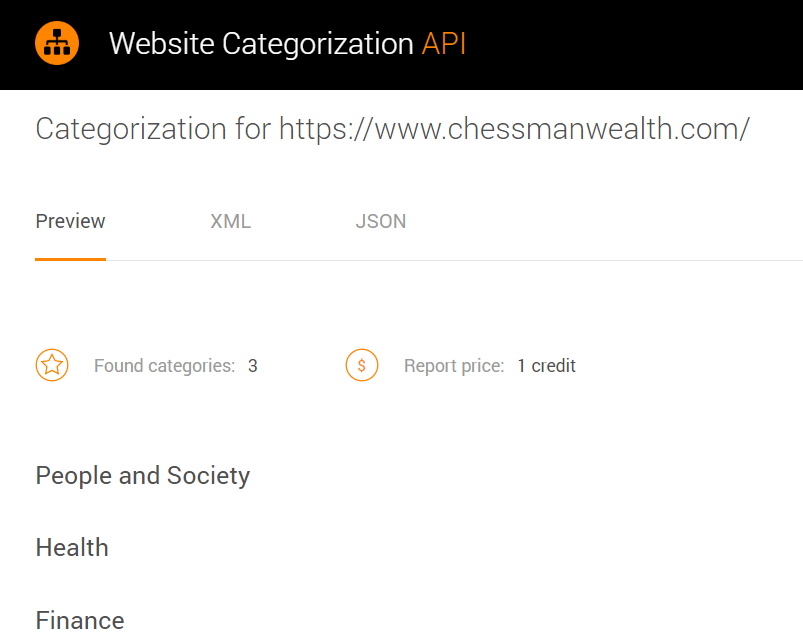How to Improve Your Website's SEO Using Cyber Intelligence

If you’re a newcomer, by now you’re probably well-acquainted with the fact that a great website or product means nothing if nobody’s going to see it. If you want to get in front of your prospective customers, you have to know two things: who they are and how to find them.
There are two ways to reach your audience via search engines: organically, through a wise SEO strategy, and using paid ads.
While paying for the ads may be the easiest way, it is not a sustainable long-term solution. That is why improving your website’s SEO content is the best way to grow your online presence and business.
In this article, we’ll talk about two core strategies and unique cyber intelligence API tools you can use to boost your SEO. As the world of digital marketing is changing due to new privacy regulations, the way websites gather data on its users has to evolve. Cyber intelligence is a revolutionary way to adjust to these changes and get ahead of your competitors. Want to find out more? Keep on reading!
Why your website needs to be SEO-friendly
Search engine optimization (SEO) is the process of generating large, high-quality traffic to your website by boosting the website’s visibility in search engine’s results. Users search for information by entering specific keywords. If they search for financial advisors in Dallas, every financial advisor in Dallas has one goal - to be on top of the list they see.
Why? Because 70% of marketers say SEO is more effective at driving sales than pay-per-click (PPC). How? Well think about it this way - generating high traffic is a great thing, but if it doesn’t result in sign-ups or sales, you’re wasting your time. PPC and social media can bring people to snoop around your website because the ad caught their attention. The traffic that comes from organic search carries more weight.
If people are searching for something relevant to your product and service, they are interested in your offer from the get-go. If your website content covers a lot of keywords related to your product, potential customers can repeatedly find you, sign-up for your email list, and turn into loyal customers.
This doesn’t mean you have to give up on PPC ads - PPC and SEO give the best results in combination. However, the traffic from PPC ads is like a flower - it’s blooming as long as you’re watering it (in this case, paying for it). Once you cut the flow, the traffic stops. Organic traffic is there whether you pay for it or not.
Now, the challenge of SEO is that there are surely a lot of financial advisors in Dallas who want to get into the top 10. So how do you make sure you’re the one to make it there?
There are plenty of ways to make your website more user-friendly, some of which are concerned with the structure of your site and other technical details. However, almost three-quarters of SEO marketers consider content to be the most important factor for an SEO-friendly website. This is why we will focus on this aspect of SEO and show you how to make sure you create high-quality, relevant content and rank it in the top ten results.
What kind of content is SEO-friendly
Google’s ranking algorithms go through continuous changes. The algorithm is getting smarter by the day. Ten years ago, you could easily rank if you simply crammed your article with the focus keyword and its related variations.
Nowadays, Google’s become more inquisitive - it is looking at the page content, headings, images, image descriptions, length, and how they relate to the focus keyword and adjacent related keywords. The goal for each piece of your content is to create something that is expert, authoritative, and credible. The more high-quality content your website has, the better your SEO score is.
How does Google determine whether your content is high-quality? Apart from analyzing text and images, it also analyzes the way users interact with your page. If they click on it, it means the headline captured their attention and fits their search intent. From that point on, Google also analyzes whether users stick around on your page. The more time they spend there, the higher the quality of the content.
Finally, as your blog post or article gains traction, Google will track whether it will earn backlinks (references) from other websites. With all these factors ideally intertwined, your page should start ranking among the top 10 search results.
This is easier said than done, so in the following sections, we’ll show you how to focus on two golden foundations of improving your website SEO content - keyword research and link building.
Improve SEO content with keyword research
Keyword research is the alpha and omega of SEO. You may be writing the most amazing blog posts and articles in the world, but if they are not optimized for relevant keywords, they won’t find their way to any readers. However, it’s not just about keyword optimization. You also have to pay attention to the competition. If you want to target popular keywords that receive millions of searches on a monthly basis, it will be much harder to rank among the top ten. But we’ll get to that in a minute.
Now, let’s do some practice. Let’s go back to the example from the beginning of our story. If you’re a financial adviser, your goal is to create content that will educate your audience and help you sell your services. So, there will be plenty of topics you want to cover.
Start off by writing down a list of things your service covers: financial plans, risk management, health insurance, retirement plans, etc. Each of these topics has a plethora of questions that need answering. For example, typical questions about retirement plans refer to the right time to start, how to withdraw money, how much to invest, etc.
Now, put in each of these words into Google search, but don’t click Enter. There will be a dropdown menu showing you some of the most common relevant long-tail keywords.

As you may notice, some of these keywords reveal different search intent. For example, risk management courses, jobs, and certifications are obviously common searches among finance professionals. This means that you will write content that fits their needs and interests. On the other hand, keywords containing risk management plan and process are searches that are coming from your potential customers seeking to get information.
Write down all of these suggestions in the categories for each topic. Keep in mind that Google’s suggestions are limited. While they give you an idea of what your customers are looking for, you may need some extra intelligence.
Use a keyword research tool and start looking for more suggestions. This neat little tool allows you to search for a specific keyword and get a list of related keywords, autocomplete suggestions and questions containing the keyword.

Here is a list of keywords related to the keyword “financial advisor”.

You may notice those numbers and wonder what they mean. We won’t deal with CPC and PPC because these metrics are useful for paid ad campaigns. The first one refers to the number of searches for the keyword on a monthly basis. It basically represents your traffic potential. If you rank among one of these keywords, you can ideally bring tens of thousands of people to your website. Sounds easy?
Now, the difficult part - the last column. The number you see there is keyword difficulty - a score based on domain authority, page authority, citation flow, and trust flow. Sounds complicated? It’s not that bad. It basically calculates the overall strength of every website that ranks among the top 10 results for the selected keywords. Long story short, it shows how difficult it is going to be to surpass your competitors. In the following section, we’ll show you how to boost your page and domain authority, as well as the number of backlinks.
On this list, you can see that retirement planning is assigned a score of 58 - meaning it’s difficult to outrank your competitors. On the other hand, “independent financial advisor” boasts a score of 36, meaning it is possible to outrank other blog posts.
If you’re only starting to optimize your website content for SEO, your goal is to aim for keywords that have a difficulty score as low as possible. If your main focus keyword is too complex, a list of related keywords can show you opportunities for similar keywords you can easily target. For example, if “retirement planning” is out of reach, you can choose “how many types of retirement plan” and write an article that’s optimized around this question.
Create a list of high search volume and low difficulty keywords - at least 50 of them. Start creating content. Give it time. A blog post takes around a month to start being ranked. In the meanwhile, track important Google Analytics metrics such as:
- Bounce rate - the percentage of visitors who navigate away from your site after viewing only one page. You will want to keep it as low as possible - no higher than 70%.
- Time spent on-page - the amount of time visitors spend reading your blog post or interacting with your page. It is a good indicator of the quality of your content.
- Average pages per session - the number of pages a visitor views during a session. If people stick around on your website after landing on a blog post, it shows you have highly relevant content and good targeting.
- Goal conversion rate - the percentage of visitors who take action after viewing a specific page, such as sign-up or sale.
If you notice a high bounce rate and low time on page, it means your content needs revising. It may have to fit search intent better or offer more high-quality information.
If you see that users are actively engaging with your content, website, and taking action as a result of this engagement - keep up the good work.
In a while, you’ll notice that some articles are doing well, leading to sign-ups or even sales. Also, you may feel that a certain article warrants a battle for high ranking despite vying for a high-difficulty keyword.
That’s when you move on to link building.
Build links with cyber intelligence
Link building is the process of securing backlinks or external links from other websites to your content pieces. They contribute to the page’s and website’s domain authority. Think about backlinks as real-life recommendations. If industry leaders and reputable websites are referring to your articles for valuable advice, opinions, and information, your reputation grows and it reflects positively on your SEO.
However, link building is a difficult process that requires a lot of time, research, and patience. But don’t worry. Just like with keywords, there are tools that can make it easier and quicker. While you can pay for mentions and links, we won’t address this tactic because, just like PPC, it doesn’t have anything to do with SEO.
Google algorithm and keyword research tools (like the one we mentioned in the previous section) will assess your link profile based on the total number of backlinks you get, their quality, diversity of their sources, and other metrics. So, how can you ensure you get high-quality links that count?
- Backlinks should be natural. This means that other websites are referring to your blog post because it contains valuable information. This information may be statistics, experiment results, tutorials, well-organized educational content, industry news, etc. This type of link is earned through the sheer quality of content - but there are always ways you can push your agenda a bit further.
- Backlinks should ideally come from the same industry. It’s great to get a backlink from the best plumbing site in your area, but it doesn’t mean much if you’re in finance. So, when you’re collecting backlinks, you want them to be from the same or related and adjacent industries.
- Anchor text should reflect the topic of your post. If somebody is linking to your website, the anchor text should be natural.
- Backlinks should generate high-quality traffic. High-quality traffic means that visitors peruse your website or take action such as sign-up or purchase.
Now, let’s move on to the difficult part. While earning backlinks organically is a great thing, most of the time you have to push things a little. Here’s how to do it.
Create a list of articles you want to promote. Depending on your goal - traffic, sign-ups, or sales, you will pick different articles. Don’t pick too many - up to three is a good beginning.
Find customer and partner links
The first helping hand you should reach out to are, naturally, your existing business partners. Take a look at their websites and blog posts. Use the search feature on their site, if available, and look for content that references something close to your blog post topic.
Ask your partners to edit their article and include a link to your page. For example, an article about different insurance plans could contain a reference to “certified financial advisers”. This anchor text could lead to your website or an article that describes which qualifications a trustworthy adviser should have.
You can also ask them to publish a case study that promotes your business.
Check for mentions
The second step is to check for dormant mentions of your business that could turn into backlinks. Of course, this is an option only if your business has been around for a while. How are you going to do it? Use a simple Google search and see who is talking about you. You can reach out to these websites and ask them to include a backlink to your homepage or specific blog post you want to boost.
Analyze your website visitors
Now let’s dive deeper. The best way to see who could reference you is to simply look who’s visiting your website. Using Website Categorization API you can analyze your website visitors and pinpoint domains that come from other businesses. You can also use this tool to investigate the selected domain’s security credentials and purpose.
If some of the visitors are associated with business domains in your industry, you can add them to your link building list. To get contact info, you can use Website Contacts API, which parses millions of web pages, SSL certificates, and corresponding social network profiles to obtain contact information such as name, email, and address.
This tool also allows you to identify threats and repeated visits from malicious websites.
Look for industry-related domains
For a broader search for potential backlink partners, you can use Reverse Whois API. It will conduct large scale research based on topics, categories, keywords, names, emails, etc. For example, if you put a keyword “retirement plan” into reverse lookup, you get more than 270 results.


You can easily shorten this list by categorizing websites according to your needs. Website categorization classifies websites into 1-3 groups out of 25 groups that are available at the moment.
For example, this financial advising firm from Dallas is classified into three categories.

So, if you want a final list of websites for your link building campaign, you can include sites that belong to one or two categories you see fit for the promotion of your business. As we mentioned, with the contacts API tool, you can easily extract all the information.
There you go! With a fresh combo of powerful tools, research that would normally take days or even weeks now takes a few hours. Now, the final step.
Create an outreach campaign
Creating an outreach email may seem like it requires great wisdom, but in fact, it’s very simple. Be simple, straightforward, and get to the point. Whether you’re reaching out to a well-known industry authority or a small business, there’s always something valuable you can offer in return.
Present yourself, say who you are and explain why you chose to reach out to this particular website. Perhaps, there is an article about health insurance plans that mentions the importance of consulting a qualified financial adviser. You can ask them to include a backlink to your blog post about “10 Things That Make Your Financial Adviser Trustworthy”. You can offer a backlink or some other kind of favor in return. For example, it is common for business beginners to offer their software free of charge to big names in the industry. In exchange, they get a case study, backlink and promotion.
You can find some great examples of link building outreach emails here or if you are looking to hire SEO consultants who can help you with outreach and SEO strategy, check this blog.
Conclusion
Sounds like a lot of work? It is indeed. While tools may make your job easier, you will still have to put a lot of thought and planning into your SEO strategy.
Don’t feel discouraged if you don’t see the results immediately or people don’t answer your emails. Fine-tune your content, send follow up emails, and be very patient. When it comes to SEO content, good things come to those who wait - and work hard.




































